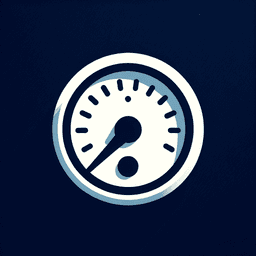
Pressure: Definition, Examples, and Applications
February 27, 2025
Pressure
In the maritime context, pressure is a critical concept that refers to the force exerted by the weight of the atmosphere or water on a surface. Understanding pressure is essential for sailors and maritime professionals as it affects various aspects of navigation and vessel operation.
Atmospheric Pressure
Atmospheric pressure is the force exerted by the weight of the air above a given point. It is a key factor in weather patterns and can influence sea conditions. Changes in atmospheric pressure can indicate approaching weather systems, such as storms or high-pressure systems that bring calm weather. Sailors often monitor barometric pressure to predict weather changes and make informed decisions about their routes.
Water Pressure
Water pressure increases with depth and is a crucial consideration for submarines and deep-sea vessels. It affects buoyancy and the structural integrity of a vessel. Understanding water pressure is vital for ensuring the safety and performance of underwater operations.
Pressure in Navigation
Pressure also plays a role in navigation through its impact on wind patterns. High and low-pressure systems can create winds that affect a vessel's course and speed. Navigators must account for these factors when planning voyages to ensure efficient and safe travel.
Pressure Measurement Tools
Maritime professionals use various tools to measure pressure, including barometers for atmospheric pressure and depth gauges for water pressure. These instruments help in assessing current conditions and making necessary adjustments to navigation and vessel operation.
In summary, pressure is a fundamental concept in maritime operations, influencing weather prediction, navigation, and vessel safety. Understanding and monitoring pressure allows sailors to make informed decisions and maintain the safety and efficiency of their voyages.
Understanding Pressure in the Maritime Context
What is Maritime Pressure?
In the maritime context, pressure often refers to hydrostatic pressure, which is the pressure exerted by a fluid at equilibrium due to the force of gravity. This is particularly relevant in oceanography, where the weight of the water column above an object increases with depth, resulting in greater pressure. Hydrostatic pressure is a critical factor in the design and operation of submarines and underwater equipment.
What Does Pressure Mean in Marine Science?
In marine science, pressure is a measure of the force exerted by the weight of water on submerged objects. This force increases with depth, affecting marine life and the structural integrity of underwater vessels. Understanding pressure is essential for marine biologists studying deep-sea organisms and engineers designing submersible vehicles.
What Does Pressure at Sea Level Mean?
Pressure at sea level, often referred to as atmospheric pressure, is the force exerted by the weight of the atmosphere above. It is a standard reference point for measuring pressure and is crucial for weather forecasting and navigation. At sea level, the standard atmospheric pressure is 1013.25 millibars or 1 atmosphere.
How Does Pressure Impact Marine Habitats?
Pressure in marine habitats increases by approximately one atmosphere for every 10 meters of water depth. This increase in pressure can significantly impact marine organisms, particularly those living in deep-sea environments. Adaptations to high-pressure conditions are necessary for survival, influencing the physiology and behavior of deep-sea species.
Time Pressure in the Maritime Industry
Time pressure is a significant factor in the maritime industry, affecting shipping schedules, port operations, and crew performance. Efficient time management is crucial to ensure timely deliveries and maintain operational efficiency. The maritime industry often faces challenges related to time pressure, requiring effective planning and coordination.




